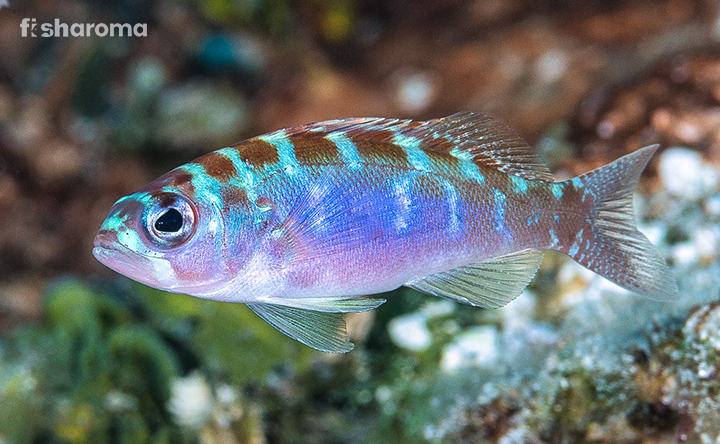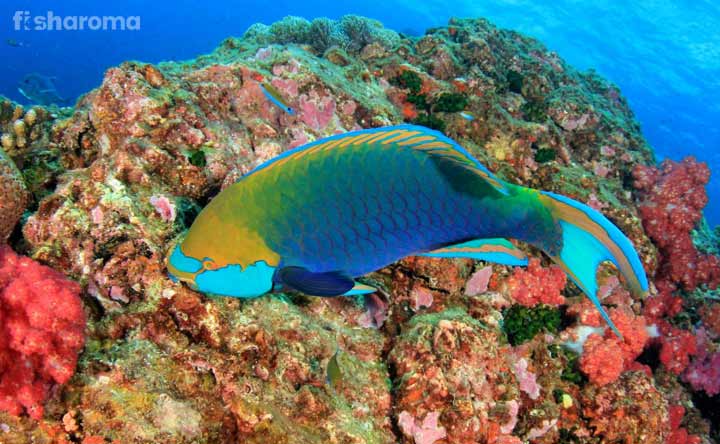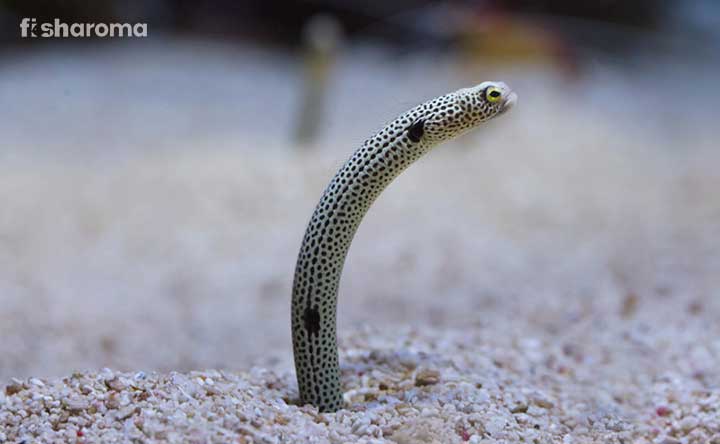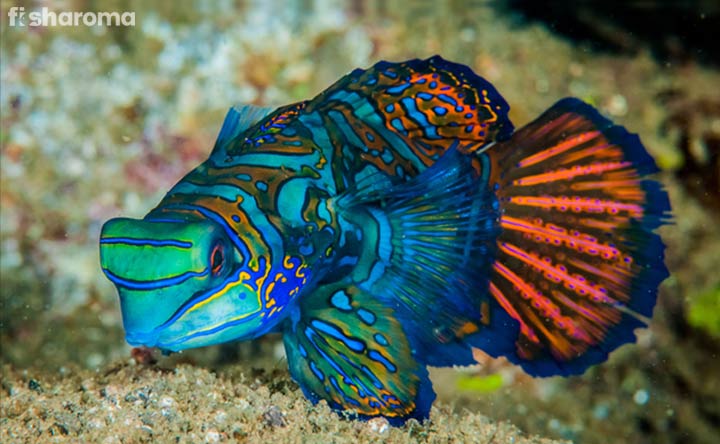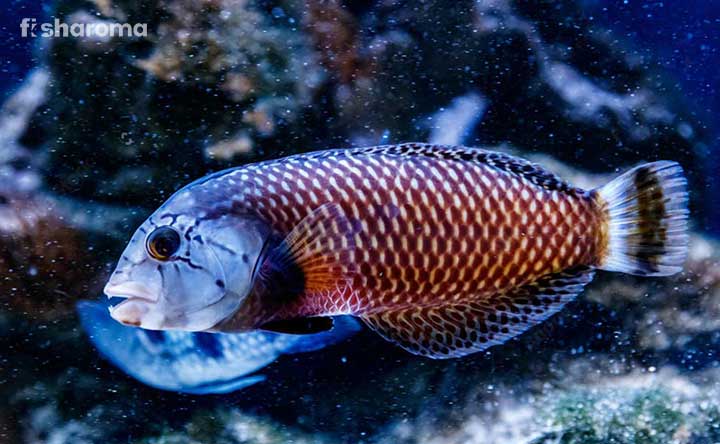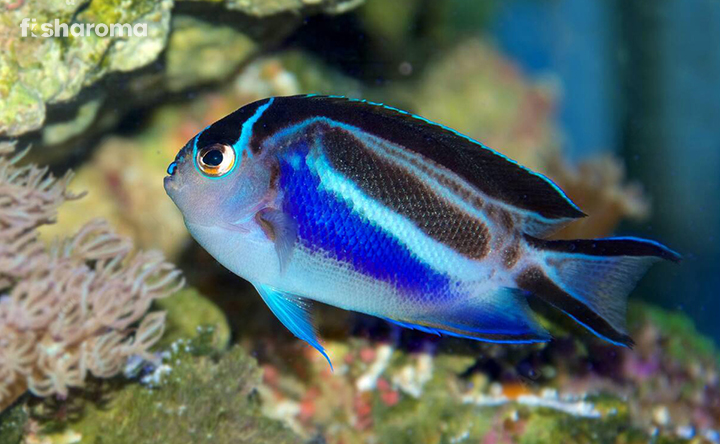Garibaldi Fish – The Complete Care Guide for This Fighter-Fish
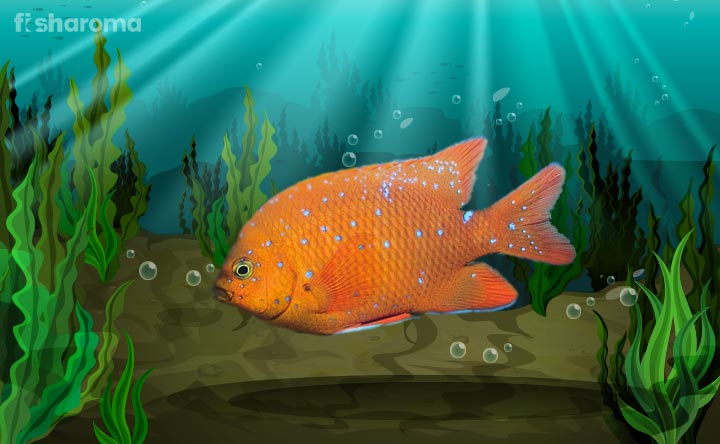
- Origin of Garibaldi Fish
- Appearance of Garibaldi Fish
- Garibaldi Tank Requirements
- Water Type for Garibaldi Fish
- Behavior of Garibaldi Fish
- Compatibility of Garibaldi Fish
- Diet Requirements of Garibaldi Fish
- Garibaldi’s Breeding Process
- Diseases of Garibaldi Fish with Preventive Measures
- Other Family Members of Damselfish Like Garibaldi
You might have often seen the bright orange-shaded Garibaldi in multiple aquariums and might also have admired it. But have you acquired the right information to care for them and maintain their health and wellbeing? Let’s discuss the orange-colored bright plump fish – ‘Garibaldi Fish’, one of the largest breeds of Damselfish. This fish is not recommended for beginners because of its large size and semi-aggressive nature. However, if you follow proper instructions from expert aquarists then you can easily breed this species.
Quick Details on Garibaldi Fish
Before choosing Garibaldi Fish for your aquarium, you may have a quick look about the species and acquire knowledge with the help of this table:
| Scientific Name | Hypsypops Rubicundus |
| Origin | Southern California (Pacific Ocean) |
| Life-Span | 12-25 Years |
| Color | Orange |
| Temperament | Semi-Aggressive |
| Size | Up to 12” (30 cm) |
| Diet | Omnivore |
| Family | Pomacanthidae |
| Compatibility | Compatible with semi-aggressive fish |
| Tank Size | 100 Gallons |
| Care Level | Moderate/Difficult |
Overview
Garibaldi is an important saltwater fish for California because it has been declared as the official marine state fish, so they are highly protected in the coastal areas of California. According to strict state law, Garibaldi fish is illegal to export to other states and countries. You need a special permit to sell, export and collect this semi-aggressive water species from the ocean. So, while buying this marine water fish, check the license and the permit to avoid penalties.
Garibaldi is a fighter and rageful fish who likes to live alone, so try to keep them isolated or with two large marine water species in the fish tank.
Origin of Garibaldi Fish
This territorial fish is found in the deep marine water of Eastern Pacific Ocean and it inhabits in the subtropical water of South, North and Baja California’s west coast. Literally, its name is derived from an Italian politician Giuseppe Garibaldi in 1840. This is a fighter fish and survives like a hero, therefore it was named after the political hero, Giuseppe Garibaldi who was a national hero and fought for the reunification of Italy.
This Damselfish is the golden trout of the state, usually found in the shallow water of the sea, and collected to be sold in the market at $ 148.98.
Appearance of Garibaldi Fish
Fish enthusiasts are often attracted to the striking appearance of Garibaldi because of its radiant orangish body, bright yellow eyes, small-sized mouth, a single row of teeth and shining blue spots in their body. Moreover, you will find fainted blue margins on the dorsal and caudal fins of the fish.
This round, bulky fish can reach up to 15” (38 cm) and weigh up to 2 lbs. in wild, but in the aquarium, they reach up to 12” (30 cm). The male fish are larger than the females and they have a lobe on their front of the head. The juveniles also have spots on their fins and upper side.
This species really shines like twinkling stars in the water of the fish tank because of the glittering flowing pectoral tail fins and bright blue spots on their body that attracts people towards them.
Garibaldi Tank Requirements
You will generally find this fish in the Kelp Forest ecosystem amongst rocky reefs that are close to the shoreline. Also, they inhabit the water under 14-30 m deep in a solitary livelihood with their territory. They don’t like other species in their small kingdom, so try to choose tankmates very carefully when you are keeping them in your aquarium.
About 40 Garibaldi Fish can set their territory, so if possible then keep the same category fish in your large-sized fish tank. Some important guidelines are given below to set a Garibaldi tank.
Tank Size
You need a minimum 100 gallons tank size to keep the large and plump Garibaldi fish because it cannot adjust in a small tank because of its size and territorial or wild nature.
Ornaments
Set a reef tank by putting corals, small sea rocks, caves and other marine ecosystem settings in the tank with green vegetation because of the nature-friendly attitude of your cute little chubby aquatic-companion.
It is recommended to keep corals and rocks along with the hiding places for their reproduction and resting, especially for the newborn Garibaldi.
Filter
You need to keep a quality filtration system in the tank of Garibaldi because there are various waste pollutants in a marine aquarium, which are needed to be filtered out. Installing an aquarium filter may help you wash out the dirt, fish poops and improve the quality of the water.
Lighting
Medium lighting is suitable for Garibaldi Fish, so fix a LED light on the ceiling of the aquarium for this fish.
Water Type for Garibaldi Fish
As a member of the family of tropical Damselfish, Garibaldi needs a marine environment and saltwater in the aquarium where it’s kept. So, follow these guidelines to set the water in the tank:
Temperature
The water temperature of the fish tank should be between 75-80°F.
pH Level
The pH of the water should be 8.0 to 8.4.
Hardness
The hardness of the water should be 8-12 dGH.
Cleaning Method
Cleanliness and hygiene management are the most important things you need to do for both your home and your pet fish aquarium. Don’t worry! It will not take much time. Just collect a mild liquid soap and use a sponge to wash out the objects and walls of the aquarium. After washing, wipe out the water droplets with a cotton cloth.
Replacement Process
Don’t take out the entire water from the tank, just change 10-15% water when you are doing it weekly and change about 25% of water if you are changing the water once in a month. Be careful that your fish does not feel stressful and troubling during this process.
Behavior of Garibaldi Fish
This rageful and aggressive fish is known as cheeky fish because of its curious nature to find much about other species. They are protective to their territory and family from their enemies or predators which are larger than them. When they feel furious and disturbed, they emit a thumping sound often heard by divers.
This fish-breed is only united with its community but unfamiliar to other breeds, so try keeping this fish with its family or with highly suitable tankmates. The male and female both have separate territories. For the beginners, juveniles are easier to keep, rather than the adult Garibaldi. Only expert fish-keepers should try to keep this fish in their aquarium because they have the nature of biting and chasing with rageful temperament. Moreover, they can attack the aquarists and the divers if disrupted or harmed.
Compatibility of Garibaldi Fish
Expert aquarists suggest keeping one species in an entire tank because of Garibaldi’s aggressive nature. Still, if you want to include more species then either keep the same breed with this fish or find the larger semi-aggressive and compatible tankmates for this species such as:
- Parrotfish
- Holacanhus Angelfish
- Rays
- Sharks
- Large Wrasses
- Soapfish
- Tangs
- Groupers
- Lionfish
Never keep small and non-aggressive fish with Garibaldi because this fish may fight or eat the small and calm-natured fish. Moreover, they are familiar to both the male and female of their territory because they believe in unity.
Diet Requirements of Garibaldi Fish
Garibaldi is an omnivorous fish that consumes both the plants and animals in marine water. This fish also eats small fish, so avoid keeping small live fish in the aquarium. This bottom-dwelling species prefers consuming some foods such as:
- Bryozoans
- Tubeworms
- Nudibranchs
- Small Shellfish
- Brine Shrimps
- Mysis Shrimps
- Crabs
- Sponges
- Algae
- Anemones
You can also buy other fish foods like flakes and pellets available in the market such as:
- Fish Science Tropical Fish Granular Food
- Fish Science Malawi Pellet Food
You have to feed your orangish friend twice a day to maintain its longevity and color. It is your duty to maintain the health and wellbeing of your pet fish for its happiness and ailment-free life.
Garibaldi’s Breeding Process
Garibaldi gets matured at the age of 5-6 when it becomes 9” (22 cm) in length. After reaching adulthood, it selects the reef environment as its home. So, these breeds are habituated to reproduce in wild, and in captivity, they feel difficulty in laying eggs. Therefore, it is suggested to keep the fish at another fish tank when they do mate with each other and reproduce new life. The male Garibaldi builds the nest for its eggs and protects them with care more than the female fish does.
The best time of their breeding is spring season during the month of March-April when the male starts their spawning process by cleaning their territory. It will also use red algae to make their nest for keeping thousands of eggs. During the spring season, the male attracts the female fish by making chuckling noise which makes the female follow the males.
Garibaldi has the habit to inspect different nests and lay eggs on a suitable one after selection. Moreover, they can lay many eggs at a time, so separate aquarium for their breeding is very necessary. For the two to three weeks after laying the eggs, the male Garibaldi protects the offspring, but some males also eat the eggs. Generally, the eggs get hatched after three weeks in warm temperate water in the tank.
You must provide a good environment to encourage their reproduction by keeping them in a separate aquarium. After birth, keep the newborn fish to another tank till they get developed and feed them proper baby foods and nourish their mothers with good care and proper food.
Diseases of Garibaldi Fish with Preventive Measures
This plump fish is often seen affected by several diseases because they eat parasites and bacteria. Some of the illnesses they are prone to such as:
- Parasitic Infection
- Genetic Disorder
- Protozoan Infection
- Ich
To keep the toxins and the health issues away from this California marine fish, just try to keep the water clean by changing the water thrice a day and clean your aquarium with mild soap rather than harsh chemicals. Also, feed them twice a day with a healthy diet plan to maintain their nourishment, growth, and color.
Other Family Members of Damselfish Like Garibaldi
Let us discuss the different categories of Damselfish, as Garibaldi fish also falls in the same category. So have a look at some names of the other members of Damselfish family:
- Blue Devil – The other name of Blue Devil Fish is Breakers Blue Devil Fish that is peaceful. This breed is found at inshore reefs, crevices, and caves but they are not aggressive like Garibaldi.
- Maroon Clownfish – This Clown Fish is dark red in color and found in the Indo-Pacific in Western Indonesia. Generally, it grows up to 6” and it is an aggressive fish like Garibaldi.
- Yellow-Tail Blue Damselfish – This blue body and yellow-tailed fish is found in the Indo Pacific Ocean in the deep reefed area. If you keep them in your aquarium then it will brighten the looks of your fish tank.
- Four-Stripe Damselfish – This fish is territorial and aggressive, especially when it gets older. Four-striped Damselfish is smaller in size but they are still hard to tackle.
- Lemon Damselfish – This yellow-lemon-shaded fish is small in size and prefers living in moderate temperature water. It’s not only small but easy to breed, and also appeals to the beauty of your aquarium.
- Neon Damselfish – Neon Damselfish is brightly colored with green, neon blue, orange, and yellow hues. This fish is not aggressive and good for beginner fish-keepers.
- Ambon Damselfish – The dark-scale margined yellow fish is one of the oldest habitats of coral reefs and it is aggressive in nature. So, beginners are recommended not to keep this fish in their aquarium without proper knowledge about them.
- Chromis Fish – You will get different shades of Chromis fish such as blue and green in the Pacific Ocean in the coral and lagoon reefs. This is easy to care for because of its small size and calm nature.
Difficulties in Keeping Garibaldi Fish
Garibaldi is not an easy breed to keep in the aquarium because of its fighting and territorial-protective nature. Also, some people are uncomfortable with its size and they don’t understand how to take care of this semi-aggressive fish because it often attacks the fish-keeper. So, follow the aforesaid care guides and breeding processes to take care of their needs and wellbeing to get rid of the difficulties.
Care Guide for Garibaldi Fish
Garibaldi is a hardy and strong fish breed, so they do not need much care because these fish are independent in nature. However, an intermediate or expert fish keeper can suggest you take care of this aggressive fish properly. Never follow the wrong process to keep these fish because they are a precarious predator that can often attack divers and aquarists. Providing a clean environment and healthy life to your little buddy is your responsibility as a fish-keeper.
Fascinating Facts of Garibaldi Fish
- This fish can lay 15,000 to 80,000 eggs at a time in the breeding season.
- The male fish eats the eggs to attract the females.
- They are very choosy about their nest for laying eggs.
- Garibaldi is the national symbol of California.
- Garibaldi can live with 40 fish of the same territory.
- The replica of this fish is often used in animated movies sometimes.
Learn About Other Large Fish of Marine Water for Aquarium
You may also know about more other large-sized saltwater fish while choosing it for your aquarium such as:
- Emperor Angelfish: This 12” yellow and blue shaded fish is also found in coral and reefed areas under the sea. It is moderate to care because of its semi-aggressive nature but if you follow proper guidelines then it is not very difficult to manage.
- Moray Eel: Beginners are suggested not to keep this highly-aggressive natured fish in their aquarium because of its wild nature. However, take experienced aquarist’s guidelines to take care of this fish.

